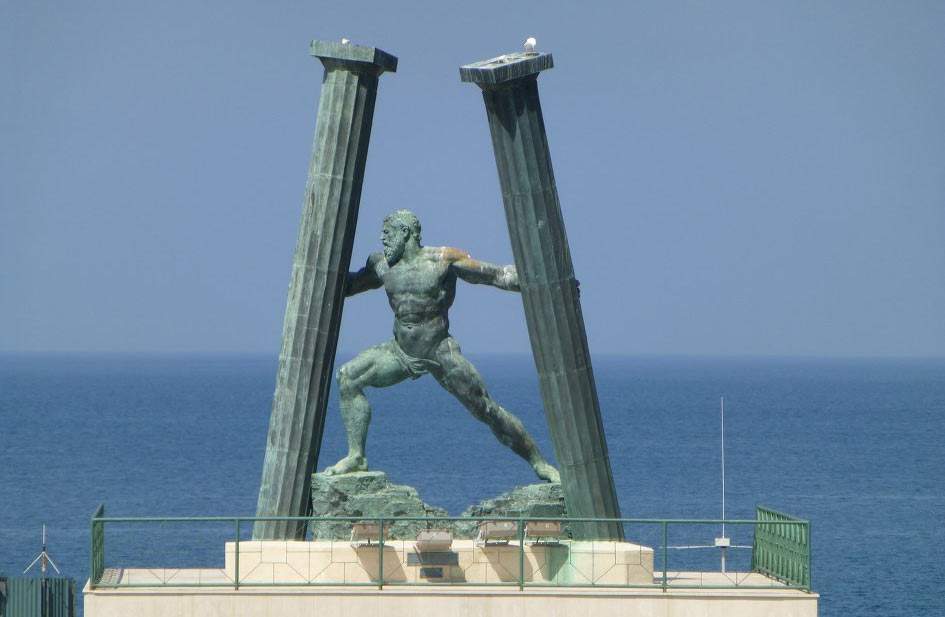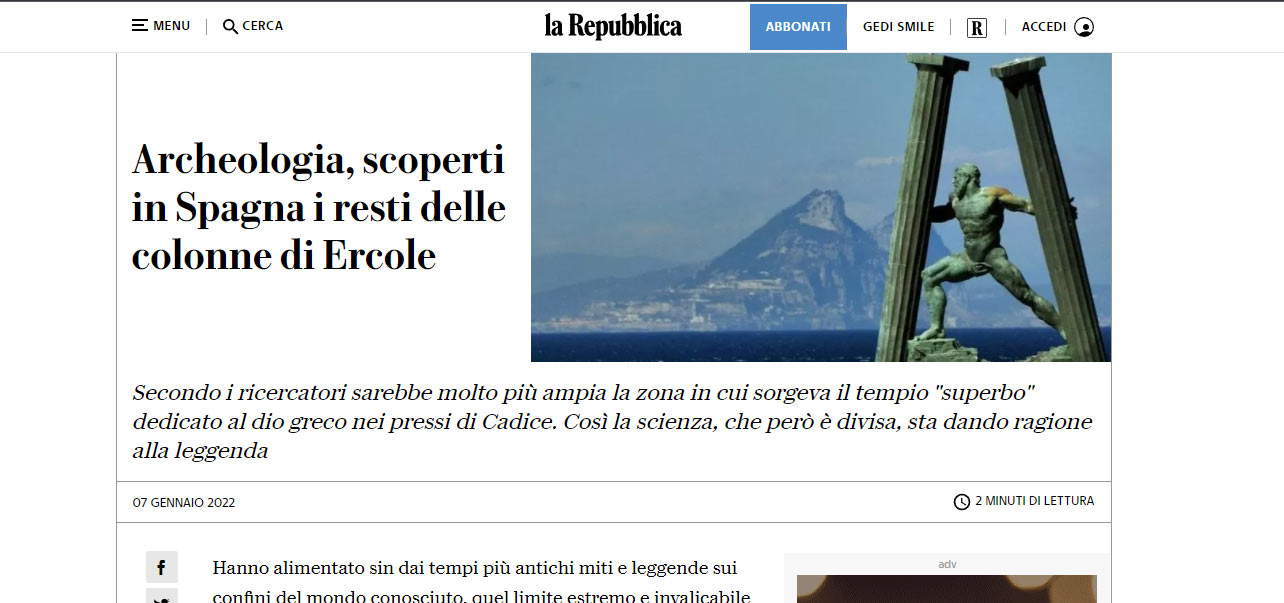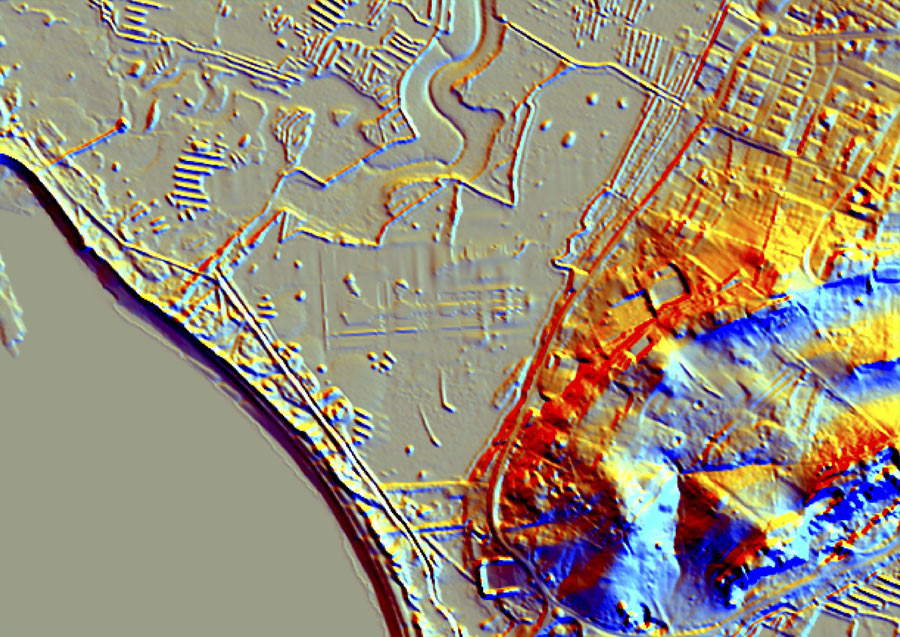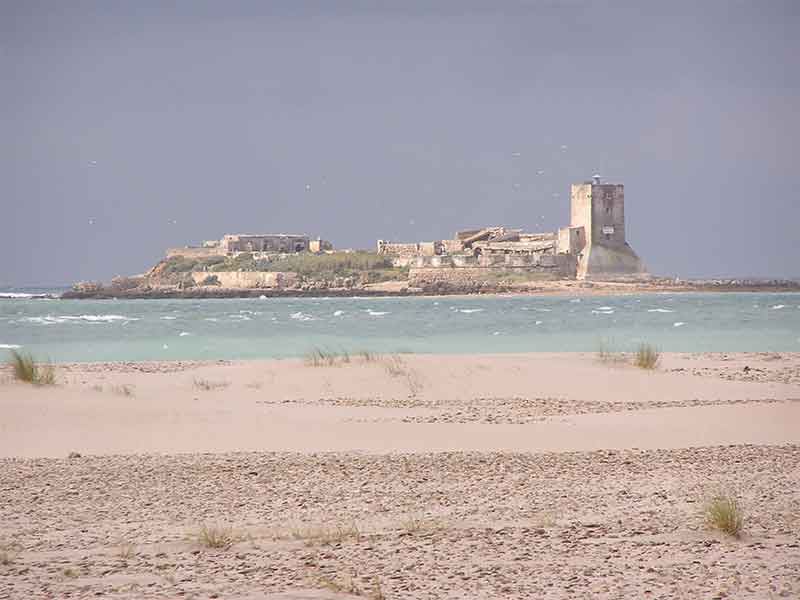No, no one has discovered the remains of the Pillars of Hercules in Spain
Have the “remains of the Pillars of Hercules” really been discovered in Spain, as many newspapers, e.g. Repubblica, Il Fatto Quotidiano, Il Secolo d’Italia and others, have headlined in recent hours? Obviously not: all the result of a great confusion between history and legend and sensationalist headlines that have reported in much more bombastic terms than they should have a discovery that has nothing. “A group of researchers in Spain,” writes Repubblica, for example, in an article published today, “brings new light to the remains of the very Pillars of Hercules about which so much, beginning with Dante, Western literature has wondered.”
But is this really the case? Have the remains of two mythological constructions been found about whose location even ancient authors did not agree? If true it would be the archaeological news of the century, it would be as if someone had discovered the remains of Atlantis, for example. But of course no one has discovered the Pillars of Hercules. So let’s see what is true about the news.


The real discovery (which is still debated): the possible location of the Gaditano Hercules temple
On Finestre Sull’Arte we had already reported last December 17 on the discovery that has been misunderstood in these hours by many local newspapers as the discovery of the Pillars of Hercules: in fact there is nothing mythological about it, the discovery is much more prosaic. In short, researchers from the University of Seville and the Instituto Andaluz del Patrimonio Histórico (IAPH) have uncovered the possible location of the temple of Hercules Gaditano, a complex mentioned in ancient documents but of which no traces remain (and many, moreover, have been looking for clues for decades to the existence and location of this important sanctuary). The hypothesis had been formulated by a doctoral student at the University of Seville, Ricardo Belizón Aragón, supported by his colleagues: according to him, traces of the temple would be found in the Sancti Petri canal, an area located near the Bay of Cadiz. All this was done through analysis of land surveys with special software using LiDAR (Light Detection and Ranging) technology.
“The data collected,” the University of Seville explained in a note, “have revealed the existence in antiquity of an environment totally different from what has been hypothesized so far: a new coastal landscape and a coastline that has been strongly anthropized since antiquity, with the presence of possible breakwaters, large buildings and even possible closed harbor pier.” In short, in the Bay of Cadiz, according to Belizón Aragón and colleagues, there would be traces of ancient buildings that, the statement released by the University still reads, “may have a correlation with the information that ancient authors such as Strabo, Silio Italico or Philostratus provide about the Sanctuary of Melqart,” which must, however, “be investigated in depth to reconstruct the history of the territory and determine the chronology , typology and uses of each of the structures detected.” Although the experts who worked on the research look forward to the results of the study, “The documentary sources we have analyzed, the archaeological information along with the images obtained with digital models of the site,” Milagros Alzaga García, head of IAPH’s Center for Underwater Archaeology, told Euronews, “lead us to believe that this could be the mythical temple of Hercules.”
The continuation of the research, the Andalusian athenaeum further explained, will focus “on carrying out archaeological investigations (terrestrial and underwater), specific documentary and geoarchaeological studies, and paleoenvironmental sampling.” All with the aim of “promoting knowledge of our past” and “enhancing some exceptional archaeological remains that allow Andalusian society to know and enjoy a singularly remarkable aspect of its history.” What was clear from the outset to scholars, but much less so to those who made improvised connections with the “Pillars of Hercules” by even talking about “remains,” is that these are hypotheses that have yet to be thoroughly investigated and evaluated. So much so that, in the days that followed, they were commented on skeptically by some members of the scientific community.

Who disagrees with the research results
Viewing the results of the University of Seville’s research with disapproval is Antonio Monterroso Checa, a professor of archaeology at the University of Cordova, who in 2020 had published an article in the University of Seville’s journal Spal where he talked about another possible location of the Temple of Hercules, on the Cerro de los Mártires, and who objected to the method used by his colleagues. “Everything has a method and there is no science without a method,” he told local newspaper Cordopolis. “Remote sensing applied to archaeology has its own. And, if it is not applied, the vocation of treasure hunters is promoted more than that of researchers with responsibility to heritage.” Monterroso Checa, going into detail, said LiDAR technology is not comparable to radar, meaning “it does not go through surfaces because it is light emitted by an active sensor whose bounce is measured. It can be used to make surveys of at most a few inches underwater, but on an indiscriminate surface. With water, the light emitted by LiDAR has a mirror effect, does not pass through, and computer processing generates a random pixelization as a solution. RaDAR is a radio wave that in certain frequency bands, passes through surfaces. They are different things.”
“The collision with water of LiDAR light,” Monterroso Checa further explained, “generates what is called an artifact: that is, a bad triangulation of points and a pixelization in the shape of triangles, which can be very heterogeneous. The same happens with rocks in mountains: the LiDAR technology does not read their deformation well and anomalous heights and triangulations are pixelated.” If anything, the Cordova lecturer’s proposal is to continue searching for the possible location of Hercules Melqart’s temple with less random methods. In short: the debate over the discovery goes on.

So what about the Pillars of Hercules?
The Pillars of Hercules are simply a myth. Art historian Marcello Fagiolo explains it well in his book Architecture and Freemasonry: The Esotericism of Construction: “If ancient mythographers attributed to Hercules the raising of the two columnar mountains of the Strait of Gibraltar, some geographers such as Posidonius of Apamea (1st century BC.C.) divulged the presence of the two bronze columns of the Temple of Melqart (the Phoenician Hercules) in Gades (Cadiz), columns that local priests identified with those of the myth. The motif of twin columns, always isolated and lacking load-bearing function, was common in Phoenician temples both outside and inside: Herodotus recalls the two legendary and very precious columns of the Temple of Melqart-Hercules at Tyre, the first of gold and the second of emerald.” According to legend, these were two columns that the hero of mythology, Hercules, allegedly erected before he made his tenth effort, and they represented the limit of the known world.
It was, however, a myth. Archaeologist Luca Antonelli, who has devoted several studies to the mythical representations of the known extreme West, discusses the subject in an article published in 2000 in Hesperia and dedicated to Mainake, the Greek settlement located furthest west (which must have been near the Strait of Gibraltar): the article quotes a passage from Pseudo-Scymnos, author of a geographical work entitled Periodos a Nicomedes and probably lived in the second century B.C., in which we read that “the mouth of the Atlantic sea measures 120 stadia: the arm of the sea is closed by the promontories of Libya and Europe. Near both shores outcrop islands, which are about 30 stadia apart: by some they are called Pillars of Heracles.” Antonelli explains that in Greece there was a tendency to portray the local Iberian reality in a hostile way, and to this end the legend of Heracles was exploited. Indeed, the scholar writes that “the spread of the tale about the stelae that the hero, on his way to Tartessus to clash with Geryon, would place at the strait, seems to take on the precise function of sanctioning the definitive victory of the Greek Heracles over the barbarian.” The Pseudo-Scimnus passage then introduces a variant on the narrative, in that the author “associates the monuments not with the rocky buttresses bordering the arm of the sea, but rather with two islands outcropping between Abila and Calpe: this traditional strand is witnessed by Pseudo-Scimnus, who in the vicinity of the European Column places the Greek settlement of Mainake.”
Disappointed, then, fantasy-archaeology enthusiasts: the “Pillars of Hercules” will continue to remain a myth...
 |
| No, no one has discovered the remains of the Pillars of Hercules in Spain |
Warning: the translation into English of the original Italian article was created using automatic tools. We undertake to review all articles, but we do not guarantee the total absence of inaccuracies in the translation due to the program. You can find the original by clicking on the ITA button. If you find any mistake,please contact us.




























